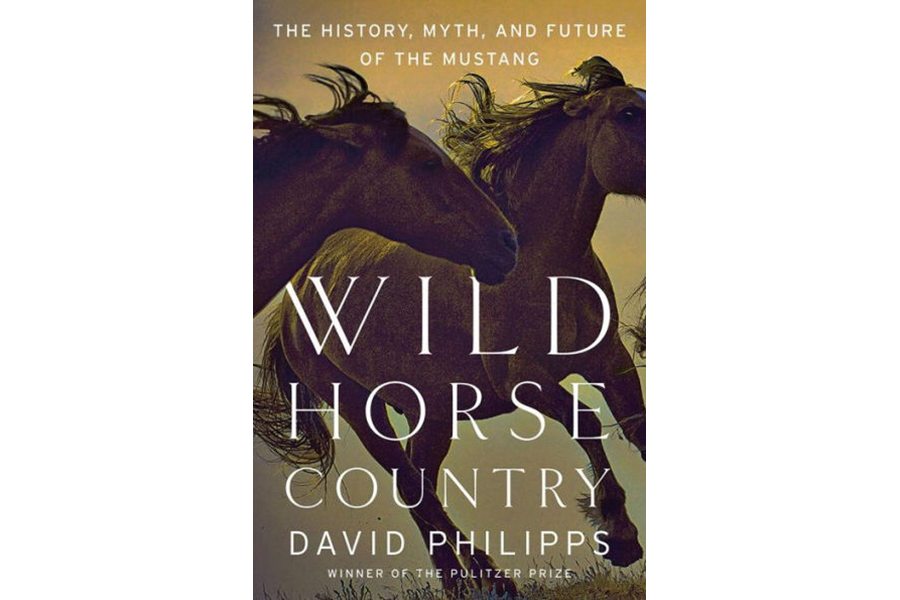Why are America's wild horses at a crisis point?
Loading...
David Philipps, a Colorado-based reporter for The New York Times, learned something bizarre a few years ago: While thousands of wild horses roam across the empty plains of the American West, thousands more live in government captivity at tremendous taxpayer expense.
"It seemed so pointless that I knew there had to be a good story behind it," he says. "How the heck did that happen?"
Philipps, a Pulitzer Prize-winning reporter, went on to discover why so many wild horses live out their lives in "storage." The answer, and the questions it raises, unfold in his new book, Wild Horse Country: The History, Myth, and Future of the Mustang.
In an interview with the Monitor, Philipps talks about the rise (and fall and rise) of the American wild horse, the remarkable mystique of this legendary creature, and the federal government's bizarre approach to equine management.
Q: The story of wild horses in the American West is complicated. How did they end up there not once but twice?
They were there for about 50 million years but were eradicated when the first humans came into North America.
No one is alive to tell us what happened, although about that time, people were very skilled at making large spearpoints, and a large number of mammals disappeared. My wife is an attorney, and I realize this is rather circumstantial evidence, but I think the short answer is that we ate them.
But the land was still primed for their return. When a relatively small number of horses did come back with the Spanish and spread with the Indians, it was almost inevitable that they would reproduce like crazy.
Some of the early American settlers compared their herd sizes to the buffalos. It would take hours to ride past them if they were grazing out there.
Q: How did the wild horse develop its mystique?
When we still had an open frontier, the wild horse developed as a kind of Paul Bunyan tall tale that you might tell around the campfire, about a mythical white stallion that could not be caught no matter what.
It was a kind of story about the limitless bounty of our land, how nothing we could do could subdue it.
Once the frontier started to close, the myth changed into what we have today: The noble animal that prizes liberty among all else.
In the old cowboy movies, the good guy almost always rides a wild horse. It submits to him because he is pure of heart.
Q: Is there something specifically American about the wild horse, which doesn't have a fancy pedigree like racing horses?
It's an immigrant, like almost all of us, low-born with no aristocratic background at all. It got where it was through grit and hard work. It became a stand-in for us.
Q: How does this portrait match up with real life for wild horses?
We put a lot of cultural weight on them that they didn't ask for. But they are really tough and amazing animals.
They don't look like much. They're small, almost laughably small. They have been under the pressure of natural selection for a long time, and that produces an animal that is smarter and has more stamina than what people select [when they breed thoroughbreds].
The people who have ridden and gotten to know them, now and during the Wild West days, have all these tales about how rough and smart they are.
Q: What did you discover about the government's bizarre treatment of the wild horse?
There have been 40 years of bureaucratic mismanagement heaped around one primary misunderstanding: We tried to preserve the wild horse without preserving the wild where they live. We've been unable to find a balance and had to store the remainder of the horses.
Q: What happens now?
We're at a crisis point where something is going to happen.
There are so many horses in storage that Congress is no longer willing to pay for any more. So the federal government is no longer gathering up excess horses, and the horse population is building up on the land. It's now about three times what the government says it should be.
Q: What happens next?
There could be a catastrophic collapse of the horse population through drought and lack of food. That would lead to lots of horses dying and a huge impact to the land and all the other animals that depend on it.
The other option is the Western Republican option: You could relatively efficiently sell the excess horses to the slaughter market, and that would not cost much. But the political fallout of killing tens of thousands of horses makes it almost impossible to do.
Q: What do you think should happen?
My suggestion is creating an inventory of where mountain lions and horses can live together, where can we encourage a predator-prey relationship. When you can encourage that, you have no population growth. You'll have a balance.
Q: Is there any good news here?
We've got 75,000 wild horses at a time when large wild animals are disappearing all over the world. It's an amazing and wonderful thing, and we have to figure out how to keep it.





